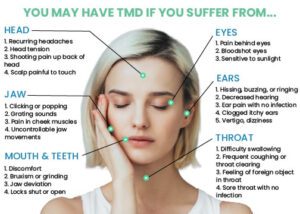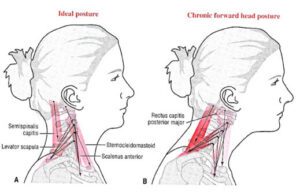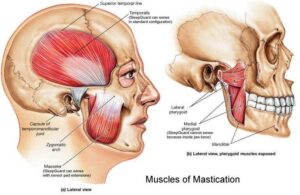What is TMJ Headache?
Introduction to TMJ Headache

Ever experienced a headache that seems to originate from your jaw? That’s likely a TMJ headache. This pain, stemming from the temporomandibular joint (TMJ) – the joint connecting your jawbone to your skull, is more common than you’d think. However, what’s behind it?
Defining TMJ Headache: More Than Just a Migraine
It’s essential to differentiate between a regular headache and a TMJ headache. The latter is a unique pain, directly linked to the TMJ’s health, a joint we often take for granted despite its role in everyday activities like talking or munching on our favourite snacks.
Digging into the Causes
Understanding the root causes can be enlightening:
- Injury: Think of a time you might’ve accidentally bumped your jaw or taken a blow during a sport. Such incidents can lead to TMJ issues.
- Arthritis: Just like your knees or elbows, your TMJ can fall prey to conditions like rheumatoid arthritis.
- Bruxism: Ever been told you grind your teeth in your sleep? That’s bruxism, and it’s a sneaky culprit behind TMJ headaches.
- Misalignment: Remember those braces you considered in high school? Misaligned teeth can lead to an uneven bite, stressing the TMJ.
Symptoms of TMJ Headache: Beyond the Obvious
While pain is a clear indicator, there are subtler signs:
- Audible Clues: That clicking sound when you chew might be more than just an odd quirk.
- Pain: Felt in the jaw, temples, ear, or neck.
- Movement Issues: Struggling to yawn or enjoy that big burger? Restricted jaw movement is a telltale sign.
- Associated Discomforts: That ear pain you’ve been blaming on loud music? It could be linked to TMJ.
Diagnosing TMJ Headache: A Step-by-Step Guide
It’s not just about pointing at pain. A thorough diagnosis involves:
- Medical History: Charting the journey of your pain, its triggers, and patterns.
- Hands-On Examination: A professional might palpate around your jaw, checking for tenderness or tension.
- Imaging: Ever had an X-ray of your jaw? It provides a clear picture of what’s happening inside.
Differential Diagnosis:
It’s essential to rule out other potential causes of the pain:
- Sinusitis: Sinus infections can cause facial pain, often mistaken for TMJ headache.
- Migraines: These can present with temple pain, similar to TMJ headaches.
- Neuralgias: Conditions like trigeminal neuralgia can mimic TMJ pain.
Treatment Options: Tailored to You
No two TMJ headaches are the same, so why should the treatment be?
- Manual Adjustments: Think of a chiropractor realigning the jaw, much like adjusting the spine. For instance, a specific technique might involve gentle pressure on the jaw to correct its position.
- Soft Tissue Therapy: Beyond bones, muscles matter. Deep tissue massages or cross-friction techniques can target tensed muscles around the jaw.
- Lifestyle Tweaks: Simple habits, like mindful chewing or posture corrections, can have a profound impact. For instance, using ergonomic pillows can ensure neck and jaw alignment during sleep.
- Medications: Over-the-counter pain relievers or even muscle relaxants can offer temporary relief. For instance, ibuprofen can reduce inflammation and pain.
- Alternative Therapies: Some people can find relief from Acupuncture or biofeedback.
In Conclusion: Navigating the World of TMJ Headache
TMJ headache, while common, remains shrouded in mystery for many. But with the right knowledge, professional advice, and timely intervention, it’s a condition that can be managed effectively. So, the next time your jaw gives you a hint of pain, you’ll know just what to do.
For a deeper understanding and expert consultations, consider reaching out to a specialized clinic or healthcare professional. Your path to understanding and managing TMJ pain is just a click away.




